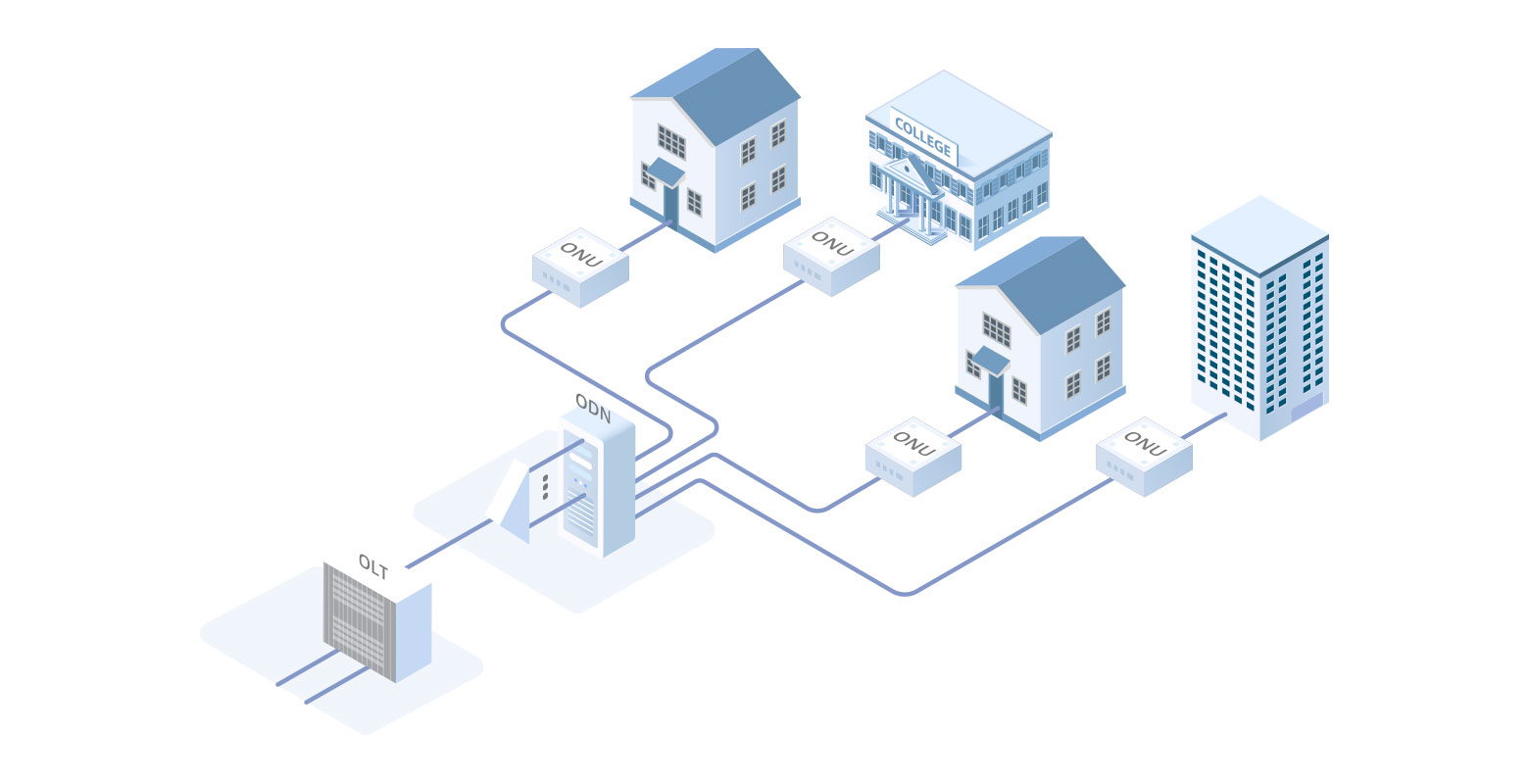What is an Optical Network Unit (ONU)?
What is an Optical Network Unit (ONU)?
An Optical Network Unit (ONU) is a device used in fiber-optic communication networks, specifically in Passive Optical Network (PON) systems. It serves as an endpoint for the fiber-optic connection, converting optical signals transmitted via the fiber to electrical signals for use in homes or businesses. The ONU plays a key role in providing internet, television, and telephone services over a single optical fiber, interfacing between the service provider’s network and the end user’s equipment.
Functions of Optical Network Unit
- Conversion of Signals: The ONU converts optical signals transmitted over the fiber optic cable into electrical signals that can be used by the customer’s equipment, such as routers, computers, telephones, and television set-top boxes. It also converts electrical signals from the customer’s equipment back into optical signals for transmission to the Optical Line Terminal (OLT) at the service provider’s central office.
- Data Transmission: The ONU receives data from the OLT and selectively processes it. It collects and buffers Ethernet data from the user and sends it to the OLT according to the allocated transmission window.
- Triple-Play Services: ONUs support “triple-play” services, which include data, IPTV (interactive network television), and voice services (using Integrated Access Devices, IAD).

Why ONU is quite important in network architecture?
The Optical Network Unit plays a critical role in modern network architecture for several reasons:
- Efficient Data Transmission: Converting optical signals to electrical signals, the ONU ensures seamless data transmission over fiber optic cables. This boosts network efficiency, minimizes latency, and guarantees reliable connectivity.
- Centralized Control: The ONU empowers service providers to centrally manage and control communication between optical fiber infrastructure and end-user devices. This facilitates efficient troubleshooting, provisioning, and monitoring of network performance.
- Scalability: Serving as the termination point, the ONU enables network scalability. Service providers can connect multiple ONUs to a single optical line, expanding their capacity to serve a larger customer base while maintaining high-speed connections.
- Cost-effectiveness: Leveraging the PON network with ONUs reduces network deployment and maintenance costs for service providers. This cost-effectiveness allows the provision of affordable high-speed internet and other services to residential, commercial, and industrial users.
Types of Optical Network Units
- Active ONU: Equipped with network monitoring capabilities, optical receivers, upstream optical transmitters, and multiple bridge amplifiers. Active ONUs are used in environments requiring high-quality VOIP audio, routing, and wireless access.
- Passive ONU: Used in Gigabit Passive Optical Network (GPON) systems, passive ONUs terminate traffic from the OLT and provide broadband services such as internet, VoIP, and HDTV to users.
Conclusion
In conclusion, the Optical Network Unit (ONU) is a crucial component in modern network setups, offering efficient and reliable connectivity solutions. Throughout this article, we have explored the key components and implementation of ONU, as well as its importance in business solutions.